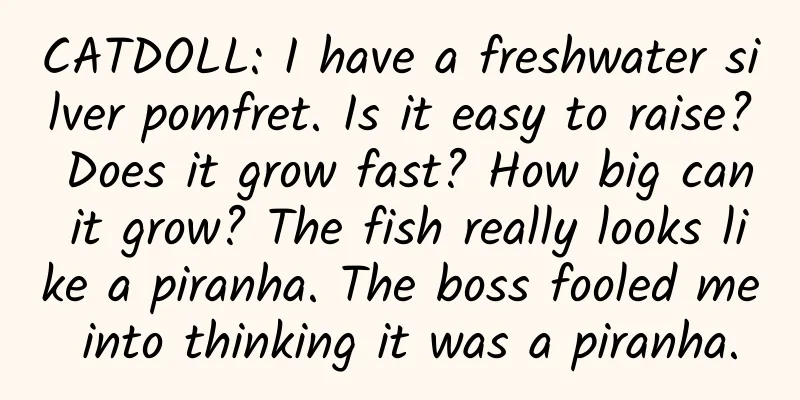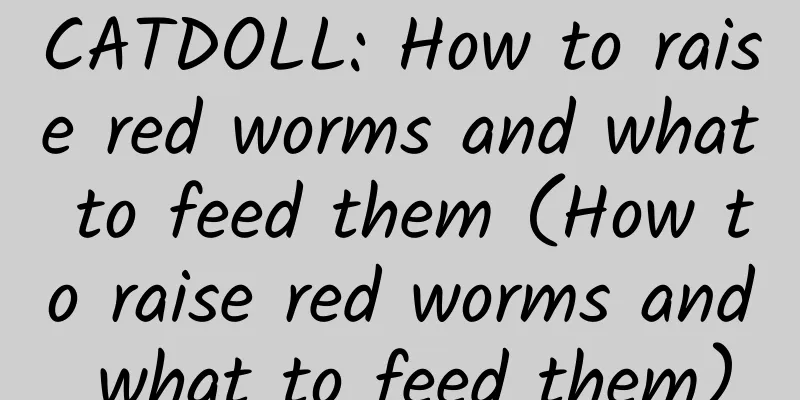CATDOLL : CATDOLL: Is there any scientific basis for feeding maggots to chickens?

Is there any scientific basis for feeding maggots to chickens?Answer: Maggots are animal-based high-protein feeds with a full range of amino acids. Feeding chickens with maggots can replace fish meal to supplement the protein needs of chickens, promote growth and development, and reduce production costs. However, when feeding chickens with maggots, improper methods and dosages can cause chickens to become ill or even die. Therefore, the following points must be mastered when feeding chickens with maggots: (1) Maggots must be washed twice with clean water before feeding, then scalded to death with boiling water, or disinfected with 1 part per 100,000 potassium permanganate. (2) Mix the maggots with fine and rough feed and feed them together, while providing plenty of clean drinking water. (3) Each laying hen can only be fed 100-150 grams of maggots per day, and the amount of maggots for young chickens should be reduced accordingly. Excessive feeding will cause indigestion, loose stools and other symptoms. (4) Chickens should be dewormed and fed sand regularly. Below are some common methods for your reference. 1. Artificial maggot breeding. Build a cement pool 70cm deep, 70cm wide and 140cm long. The edge of the pool should extend 45cm inward to prevent maggots from crawling out. Put 33-50cm thick tofu dregs in the pool, add appropriate amount of rice washing water or dishwashing water to keep the tofu dregs half dry and half wet, and then Then cover it with straw or weeds. After 6-7 days, a large number of maggots will be born in the pond, which can be used to feed chickens. Then add some fresh cow dung or human dung, vegetable leaves, weeds, etc. to the original pond to continue breeding maggots and raising chickens. 2. Breeding worms with straw. Cut the straw into 0.3-0.6cm long, put it in a pot and boil it until soft, then take it out and bury it in a 13-177m deep earth pit, cover it with 7cm thick garbage, and then smooth it with mud to form a steamed bun-shaped roof. Pour some rice soup on the soil pile every day. After 7-10 consecutive days, when the straw in the pit gives birth to worms, let the chickens peck at it. After the worms have eaten, immediately cover the original mud in the pit, and then pour rice soup according to the original method. The pit will grow worms again, and the number will be about twice as much as the first time. This can be done 5 times in a row. 3. Breeding worms with cow dung. Take 500-600kg of fresh cow dung and let it dry in the shade until it becomes a block, then add 10-15kg of chicken feathers, ash and miscellaneous dung. 25 (X) to 30 (X) kg, 2000 to 250 okg of water weeds (sun-dried, sprayed with water), 1500 to Zookg of turf, 50 to lookg of distiller's grains, sprinkle water and mix, stir thoroughly into a paste (not sticky), then pile up for insect breeding. Apply a layer of mud on the top and around the pile, and cover it with grass. After 7 to 10 days, small insects will grow. At this time, uncover the grass cover and let the chickens peck. Maggots are an animal-based high-protein feed with a full range of amino acids. Their quality is comparable to that of fish meal and silkworm pupae, so they can significantly improve the growth and egg-laying performance of chickens. High protein Maggots are high in protein. People need a lot of protein Chickens need it too. Can maggots be eaten? Thank you!Maggots are edible. Maggots are called headless larvae because their heads and mouthparts are extremely degenerate. Fly maggots are especially nutritious and palatable. They contain a variety of amino acids and fatty acids necessary for animal bodies, as well as a large amount of vitamins and trace elements, and are a high-quality protein source. Flies are holometabolous insects, and their life cycle can be divided into several stages: egg, larva, pupa, and adult. Most species of female flies lay eggs, but some lay larvae. After 3 to 4 days, the larvae turn into pupae, and the pupae emerge as adult flies with wings and can fly. /iknow-pic.cdn.bcebos.com/79f0f736afc37931362f0337e6c4b74543a9116ctarget=_blanktitle=Click to view the large imageclass=ikqb_img_alink>/iknow-pic.cdn.bcebos.com/79f0f736afc37931362f0337e6c4b74543a9116c?x-bce-process=image%2Fresize%2Cm_lfit%2Cw_600%2Ch_800%2Climit_1%2Fquality%2Cq_85%2Fformat%2Cf_autoesrc=/> Additional information The crude protein content of fly maggot powder is as high as 56% to 63% (average 59.5%), fat 13%, ash 7%, and sugar 3.1%. As a high-protein feed, the nutritional level of fly maggots is comparable to the best imported Peruvian fish meal, 1.3 times that of soybean meal, and 1.9 times that of bone and meat meal. It contains 15% crude protein and 5.8% crude fat. It can not only be directly fed to conventional breeds of pigs, chickens, ducks and fish, but also is the best live bait for special animals such as shrimp, crab, eel, rice field eel, American frog, bullfrog, seven-star fish, grouper and turtle. Fly maggots are easy to cultivate, with low cost and short cycle. 2000 grams of feces can produce 500 grams of fly maggots. One cubic meter of fly cage can produce about 150 grams a day. Using 10 fly cages with upper, middle and lower layers, 20 to 25 kilograms of fresh maggots can be obtained every day. The total cost of producing 1,000 grams of fresh maggots is only 0.14 yuan. Calculated based on 4 kilograms of fresh maggots per 1,000 grams of fish meal, it is only 30% of the price of fish meal. According to experiments conducted by the Beijing Feed Research Institute, the average daily production of fly maggots in an area of 18 square meters is 9.75 kilograms. The institute used self-bred and self-raised fly maggot feed to feed chickens. They added 10% fly maggots to the feed, and the control group added 10% fish meal to the feed. The results showed that the former had a 20.3% higher egg production rate and a 15.8% higher feed return than the latter. Feeding piglets with 100 grams of fly maggots increased their weight by 7% compared to feeding them the same amount of Peruvian fish meal, and the cost was reduced by 13.2%. Reference: /baike.baidu.com/item/%E8%9B%86/857910?fr=aladdintarget=_blanktitle=Maggot_Baidu Encyclopedia>Maggot_Baidu Encyclopedia Clean maggots are edible. Maggots are rich in high-quality protein. There are professional households that specialize in raising maggots. Those maggots are edible. They are the larvae and eggs of flies. The larvae are maggots and they are very delicious when fried. Edible. Maggots are an insect resource that is high in protein, fat, and amino acids, and is known as the "nutritional treasure house for animals." It depends on the source of your maggots. Some maggots come from feces. Even if they are not dangerous at all, they can cause psychological effects on people. Whether you can eat them or not will challenge your psychological endurance! |
<<: CATDOLL: What do red worms eat? How to breed them
>>: CATDOLL: What are the signs of wasps entering your home?
Recommend
CATDOLL: What products are good for raising snails? (What products are good for raising snails?)
1. How to make a box to store feed for snails? Fi...
CATDOLL: How many mandarin fish fry should be placed in one acre of crab pond?
1. How many mandarin fish fry should be placed in...
CATDOLL: What is the value of breeding flies? Zhihu (What is the value of breeding flies? Zhihu article)
1. How many flies can be raised in one square met...
CATDOLL: How to make money by breeding flies (How to make money by breeding flies)
1. What are the correct methods and precautions f...
CATDOLL: Insect Notes: Characteristics and life features of locusts
Characteristics of locusts: The pair of antennae ...
CATDOLL: Eating crayfish for free is a great idea.
1. Eat crayfish for free. This model is awesome. ...
CATDOLL: Can I feed parrots with golden arowana?
Can I feed parrots with golden arowana? Absolutel...
CATDOLL: What are the water quality requirements for raising African three-lake cichlids?
What are the water quality requirements for raisi...
CATDOLL: What is the current market situation of pearl oysters?
1. What is the current market situation of pearl ...
CATDOLL: There are many feeds for farmed shrimp. What kind of feed is generally used to feed farmed shrimp?
In the breeding and production of white shrimp, t...
CATDOLL: How many seedlings are needed to grow one acre of golden cicada seedlings (How many seedlings are needed to grow one acre of golden cicada seedlings)
1. How many peach trees should be planted per acr...
CATDOLL: I would like to ask the teachers, does anyone know how to breed red worms and how to reproduce red worms?
【Document 1】 In turtle and tortoise breeding pond...
CATDOLL: How to raise soft-shell turtles at home?
How to raise soft-shelled turtles at home? 1. Ens...
CATDOLL: The content of The Old Man and the Sea should be more comprehensive.
Santiago is an old fisherman in Cuba. When he was...
CATDOLL: How to keep spiders, what do they eat, do they drink water
1. How to keep spiders, what do they eat, and do ...









